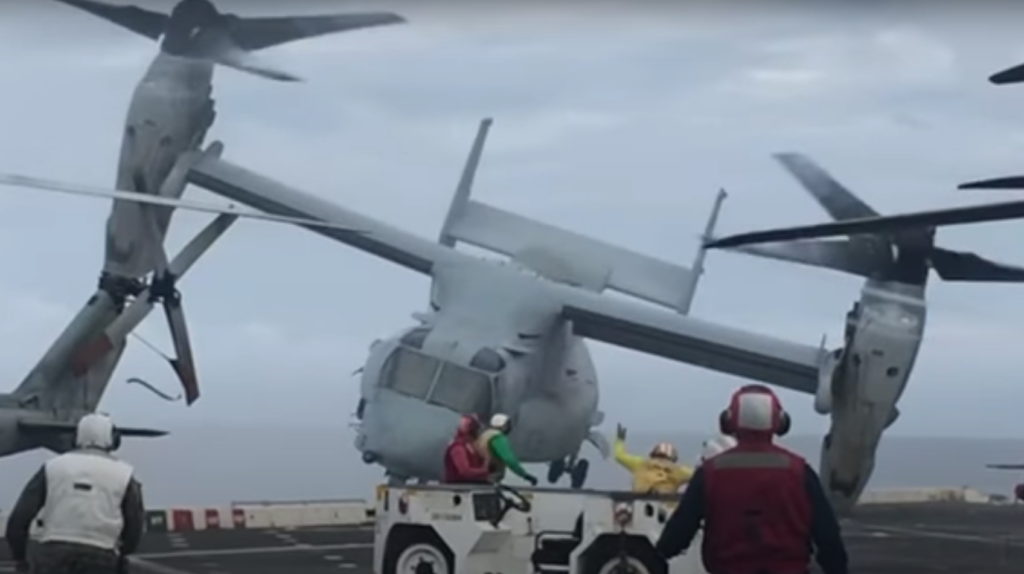Footage of a 2017 crash of a U.S. Marine V-22 Osprey tiltrotor aircraft that resulted in the deaths of three Marines has been revealed for the first time this month — nearly five years after the fatal accident.
The footage was obtained and published on YouTube on July 2 by What You Haven’t Seen, a channel that investigates and collects footage from transportation safety accidents. The footage provides the first video of the V-22 that crashed into the USS Green Bay (LPD-20) on Aug. 5, 2017, while the ship was operating near Queensland, Australia.
The V-22 involved in the incident was carrying a full troop of Marines when it crashed. Three were killed and another 23 personnel were injured in the crash.
The three Marines killed in the 2017 crash were: 1st Lt. Benjamin Cross, 26, of Oxford, Maine, Cpl. Nathaniel Ordway, 21, of Sedgwick, Kansas and Pfc. Ruben Velasco, 19, of Los Angeles.
The first two and a half minutes footage shared by What You Haven’t Seen provided video of the crash from two different angles, both played in real-time and in slow motion.
The crash footage showed the V-22 approaching USS Green Bay in a relatively controlled manner until the last few dozen feet when it begins to wobble and pitch forward with its nose towards the deck of the ship. In the last moments before the V-22 collided with the ship, one of the aircraft handling officers can be seen desperately signaling for it to altitude before he and other members of the flight deck crew begin running away as the V-22’s left nacelle scrapes along the ship, with its proprotor still spinning at high speed.

In May 2018, USNI News reported on the results of a crash investigation. The Marine Corps determined the V-22 crashed because it was facing too much downwash and did not have enough thrust to maintain its hover as it approached the deck of the ship. A Defense Department official told USNI News the V-22 may have also been carrying too much weight.
Investigators determined the pilot and copilot – Cross, who died in the crash – couldn’t stop the aircraft’s descent and took several measures to avoid the collision, including moving the Osprey’s nacelles forward.
After the V-22’s left nacelle struck the USS Green Bay’s deck, the aircraft continued forward along the starboard side of the flight deck until it struck a steel stairway. The impact of the collision was enough to crush the cockpit, breaking the hip and leg of the pilot inside. After colliding with the stairway, the V-22 fell 30 feet into the water below. A hole in the cockpit caused the aircraft to quickly fill with water and it sank nose first into the ocean.
Search and rescue efforts were able to recover 23 injured passengers and crew members from the V-22, but Cross was never able to escape the cockpit and Ordway and Valesco remained restrained in the aircraft and did not use their life preservers or bottled oxygen supply after the crash.
Additional footage shared by What You Haven’t Seen showed the wreckage of the V-22 being lifted out of the water by a salvage ship and then images from similar mishaps involving V-22s.



